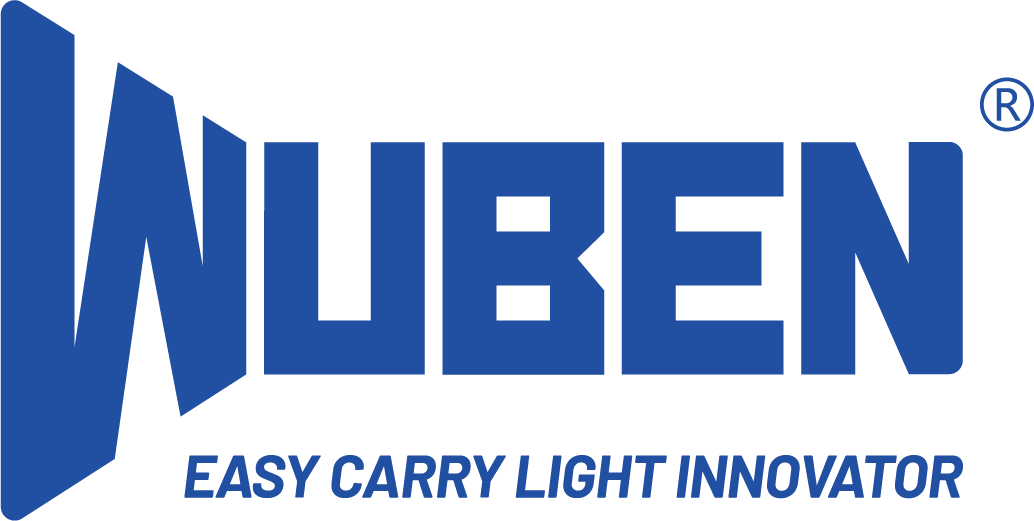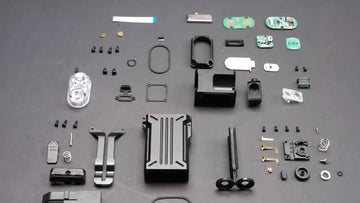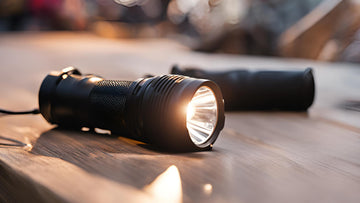
Understanding batteries used in flashlights
Batteries come in many sizes, shapes, capacities and types. We will look at batteries used in high quality flashlights to help you understand them more and make it easier to choose the ones to best suit your needs.

Battery capacity
Battery capacity is measured in milliamps x hours (mAh). An example is, if a battery has 250 mAh capacity and averages providing 2mA current flow, the battery will last for (250 mAh/2 mA) = 125 hours. Higher mAh ratings mean that the battery will provide power for longer.
Lithium ion (Li-ion) batteries
Wuben flashlights use Li-ion batteries. Li-ion batteries have high energy density and low self-discharge. They are made to either have high energy or high power density.
Some Wuben Li-ion batteries can be directly charged with USB-C cables and have indicator with red and green LEDs to indicate their level of charge. With some of these, like the ABF920R, used in the popular Wuben E6, red means 'charging' and green means 'charged'. Other Wuben flashlight batteries can are charged by plugging a USB-C cable plugged into the torch itself. The battery for the Wuben D1 can he removed and used as a USB-C power bank for charging up devices such as phones with a USB-C to USB-C cable.
The numerical name of lithium ion batteries is related to its physical dimensions
For a Li-ion cylindrical battery, the numerical name of the is based on its diameter and length - the first two digits indicate the diameter in mm and the following digits indicate the length, also in mm. These two sets of numbers are normally followed by another zero digit. An example is that a 26650 battery has approximately 26mm diameter and 65mm length and a 18650 battery has approximately 18mm diameter and 65mm length.

How Wuben batteries are 'protected'
Wuben batteries have three safety features:
- PCB : A PCB (printed circuit board) integrated into the cell packaging. The circuits protect over charge and over discharge, short/over current and high temperatures. The circuit board will reset automatically or when placed in a charger. Protected batteries are less likely to cause harm or damage to property as they are less likely to ignite.
- PTC : A PTC (Positive Temperature Switch) is a small round disc at the top of the battery, inside the casing. PTCs protect against overheating. They will automatically reset. They have low resistance, but if there is a surge in current, the battery will heat up and the PTC will increase its resistance to prevent burning. PTCs self-cool.
- CID : A CID (Current Interrupt Device) or pressure valve: This will disable the cell permanently if the pressure is too high in the cell which can happen from overcharging. CIDs are similar to the PTC because both features disrupt the circuit connection to prevent overheating. If the battery becomes overcharged, its pressure increases, but the CID will interrupt the connection with the positive terminal. It works by venting gas through the hole in the top of the battery if it becomes overheated.
Details about popular Li-ion Wuben batteries
- 14500 battery: Wuben uses this size battery in the E6. It has 750-920mAh. It is exactly the same size as a AA battery. Note that you cannot assume that a flashlight which runs on a disposable AA battery is compatible with a 14500 battery as the flashlight can become damaged, so please always check the specifications. The Wuben E6 comes with a 14500 Li-ion battery that can be conveniently directly charged with a USB-C cable. Its positive pole has an LED indicator which indicates when the battery is charging and when it is at full capacity.
- 18650 battery: Wuben has 3 versions of this with 2600, 3100 and 3400 mAh capacities and uses them in the Wuben L50, D1 and C3 EDC flashlights. They are also compatible with the B2 bike and C2 flashlights. These batteries are longer in length and have a wider diameter than an AA battery. Their output is normally 3.6-3.7 volts. 18650 batteries are not made for temperatures below freezing.
- 21700 battery: Wuben also uses these in the B2 bike light and C2 EDC flashlights, (both of which are also compatible with the 18650 battery). This indicates that the 18650 and 21700 batteries have similar size. The 21700 is wider and longer, meaning that it has a higher capacity, giving it a higher mAh rating. The Wuben 21700 batteries have 4800 mAh compared to up to 3400 mAh in the 18650. 21700 batteries make flashlights reasonably compact whilst delivering extended run times and relatively high light output.
- 26650 battery: The ABT5000C is Wuben's 26650 battery which is compatible for a number of high drain devices and allows long run time between charges. It has 5000 mAh, low internal resistance and voltage stability to protect circuits for various electronic devices. Other safety devices include pressure safety valve protection, PCT overheat protection, a separate microporous protection and a steel shell.
Popular Wuben Li-ion batteries summary table
Below you can compare different batteries available from this website
|
Battery |
Diameter/mm |
Length/mm |
Capacity/mAh |
Weight/g |
Compatible flashlights |
|
ABF750R 14500 |
14.0 |
50.0 |
750 |
19 |
E05, E6 |
|
ABE2600C 18650 |
18.5 |
69.0 |
2600 |
49 |
|
|
ABE 3100C 18650 |
18.6 |
69.8 |
3100 |
48 |
C3, C2, B2, L50, D1, E12R T103 |
|
ABE3400T 18650 |
18.6 |
69.8 |
3400 |
48 |
C3, C2, B2, L50, D1, E12R T103 |
|
ABD4800 21700 |
21.6 |
76.1 |
4800 |
80 |
TO50R, B2, C2 |
|
ABT5000C 26650 |
26.5 |
71.5 |
5000 |
97 |
|
Other types of flashlight batteries
NiMH is an abbreviation of Nickel-Metal Hydride. They are rechargeable batteries which come in AAA, AA, C, D, 9-Volt, and 12-volt sizes. They are considered to be of high quality but normally they have a lower capacity and shorter lifespan than a lithium-ion battery.
Lithium batteries are different from lithium-ion batteries because they are non-rechargeable. They are available in AAA, AA, 9-Volt, and CR123A (cylinder batteries used in alarm systems). They can can have a lifespan up to 10 years because of their low discharge rate and perform well in below freezing temperatures. CR123A batteries are considered a good choice for using a torch flashlight in cold temperatures.
Non-rechargeable alkaline batteries. These are common, inexpensive and available in AAA, AA, C, D, 9-volt, along with button cells. Alkaline batteries have the disadvantage of leaking and can cause damage to the torch they are in. A way to reduce the likelihood of leaks is to power up the device at least once a week. If the flashlight is not used often, it is safer to remove the alkaline battery and store it elsewhere. Alkaline batteries have lower power output, leading to lower brightness and throw distance.





Thank you for your kind words! We appreciate your positive feedback.
No problem at all. Great customer service. Thank you.
Hi John,
I want to extend my sincere apologies for any confusion caused by our previous oversight.
We acknowledge the mistake in providing you with the incorrect website link, and we appreciate your patience in bringing it to our attention. The accurate website for our products is www.wubenlight.com/collections/battery.
Thank you for your understanding, and please feel free to reach out if you have any further questions or concerns.
Best,
The Wuben Team
Thank you for the quick response. Are you sure about the website abc.com, that’s the television network site for American Broadcast Corporation. I just tried it. I tried the link, and manually entered it.
Hi John,
Regarding the C2 flashlight, we appreciate your interest. However, it’s designed for different batteries, and using 21700 Flat Top batteries might affect the fit. We recommend checking out our recommended batteries at abc.com for the best performance.
Best,
The Wuben Team
First thing, I love your flashlights. Every one I’ve ever purchased still works great. One of my flashlights is your C2 (which I highly recommend to everyone), and was wondering if I can put 21700 Flat Top batteries in it. Will this make the fit too loose? Thank you again for making such great products!
Hi! Absolutely, the C3 supports a rechargeable 18650 battery with a protection circuit, and it’s also compatible with two CR123A disposable batteries(recommended for backup, please note they are not rechargeable).
Feel free to use either option based on your preference. Let us know if you have any more questions or if there’s anything else we can help you with!
Can I run the c3 off of a non rechargeable battery?